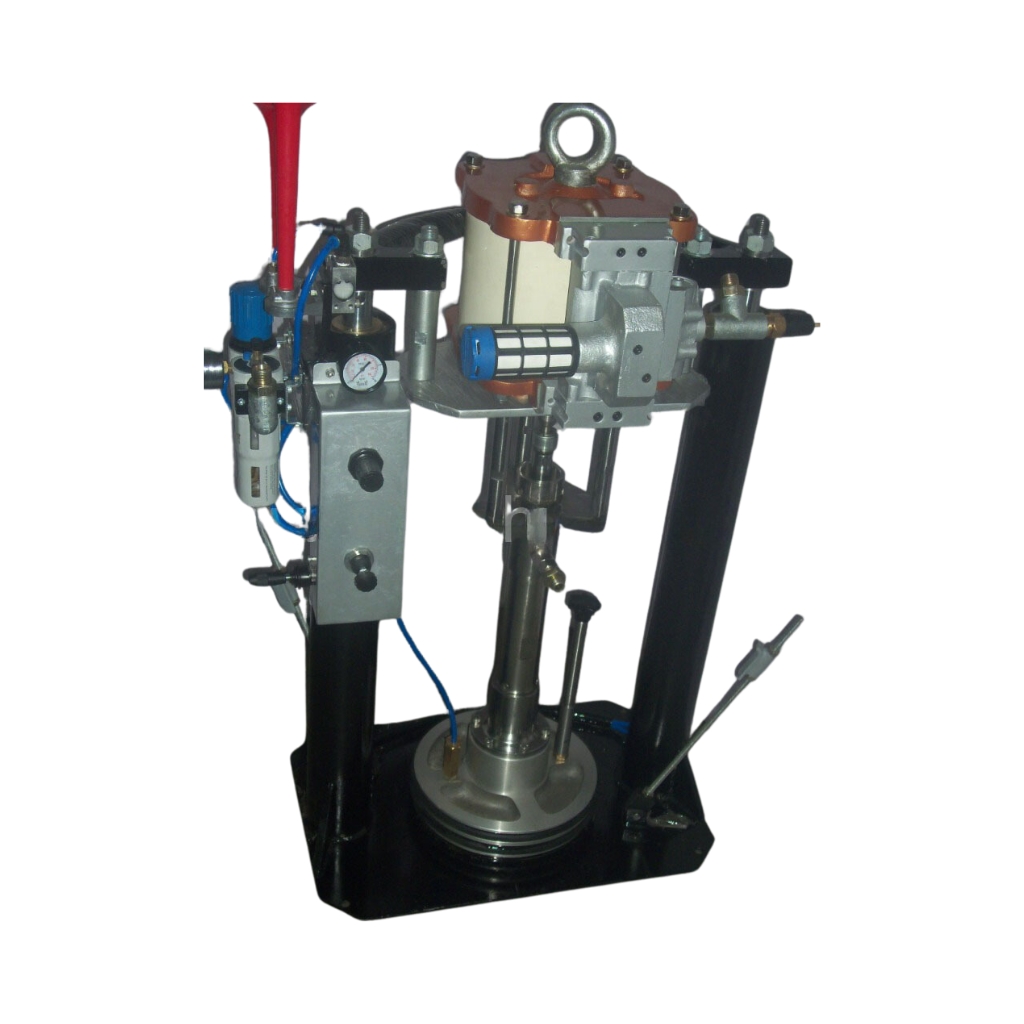Dispensing
- PRODUCT
- Dispensing Spray Painting Equipment

Model : DHARAM
Typical Material Handle:
Adhesive, wax, Sealant, Pasty Material
Typical Application
Underbody, auto body sealant, dispensing adhesive
Dispensing spray painting equipment, also known as spray paint dispensers or spray painting systems, are sophisticated tools used in various industries for applying coatings, paints, or finishes onto surfaces efficiently and accurately. These systems typically consist of several key components, each playing a vital role in the painting process. Here’s a comprehensive description of the components and functionalities typically found in dispensing spray painting equipment:
Spray Gun: The spray gun is the primary component responsible for atomizing the paint or coating material into fine particles and propelling it onto the surface to be painted. It consists of a nozzle, fluid passage, and air cap. There are various types of spray guns, including HVLP (High Volume Low Pressure), LVLP (Low Volume Low Pressure), and conventional air spray guns.
Fluid Supply System: This includes the paint reservoir or container, pumps, regulators, and filters. The fluid supply system ensures a steady and consistent flow of paint to the spray gun. It may involve pressurized tanks, gravity-fed containers, or pumps depending on the application and requirements.
Air Supply System: Compressed air is essential for atomizing the paint and propelling it out of the spray gun. The air supply system typically includes an air compressor, regulators, filters, and hoses. Proper regulation of air pressure is crucial for achieving desired spray patterns and coating thickness.
Control Unit: Modern dispensing spray painting equipment often features electronic control units or programmable logic controllers (PLCs) that regulate various parameters such as paint flow rate, air pressure, spray pattern, and triggering mechanisms. These units allow for precise control and automation of the painting process, improving efficiency and consistency.
Spray Booth: A spray booth is an enclosed space designed to contain overspray and fumes generated during the painting process, ensuring a safe and clean working environment. It typically includes exhaust fans, filters, lighting, and ventilation systems to remove airborne contaminants and maintain air quality.
Safety Features: Dispensing spray painting equipment is equipped with various safety features to protect operators and ensure compliance with safety standards. These may include safety interlocks, pressure relief valves, grounding systems, and personal protective equipment (PPE) such as respirators, gloves, and goggles.
Fluid Handling System: This system manages the flow of paint or coating material from the reservoir to the spray gun, including hoses, valves, fittings, and regulators. It ensures precise control over the paint delivery and facilitates quick color changes or material swaps.
Cleaning and Maintenance Tools: Proper maintenance and cleaning are essential for prolonging the lifespan of dispensing spray painting equipment and ensuring consistent performance. Equipment may include solvent flushing systems, cleaning brushes, spray gun maintenance kits, and storage solutions for paint materials.
Integration with Robotic Systems (Optional): In automated manufacturing environments, dispensing spray painting equipment may be integrated with robotic arms or automated systems for enhanced precision, speed, and consistency. This integration allows for seamless integration into production lines and reduces manual labor requirements.
– PVC under coatings,
– Sealants, Mastics and Silicones
– Grease and Lubricants
– Printing Inks
– Bitumen and Undercoating
– Urethanes and Butyl
– Pasty Coatings and Epoxies

